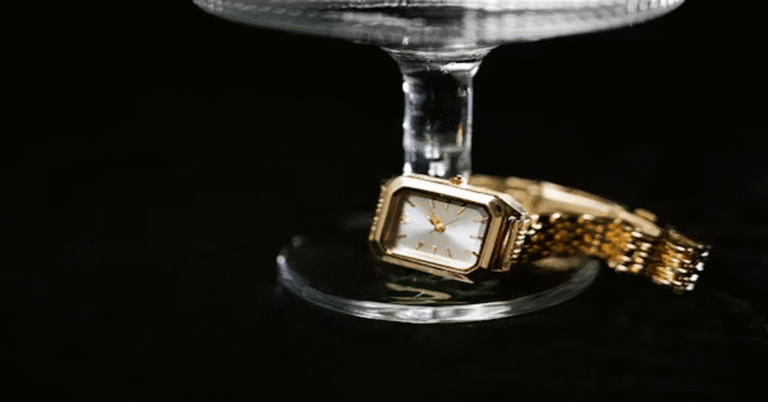
For generations, the concept of orthodontics was associated with traditional metal braces—bulky, uncomfortable, and highly noticeable. Children and teenagers who needed teeth alignment often experienced social discomfort due to the appearance of metallic wires and brackets. Even adults avoided orthodontic treatments because of the aesthetic challenges. However, the last few decades have witnessed a revolution in orthodontics with the rise of clear braces.
Clear braces are a modern orthodontic option designed to combine the effectiveness of traditional braces with a discreet, subtle look that blends with the natural color of teeth. They are particularly appealing to adults and professionals who want straighter teeth without the social stigma of noticeable orthodontic appliances. In this article, we will explore clear braces in detail, including their design, benefits, limitations, suitability, and comparisons with other orthodontic options. By the end, you will gain a comprehensive understanding of whether clear braces may be the right solution for you or someone you know.
What are Clear Braces?
Clear braces are orthodontic devices that work in the same way as traditional metal braces but use tooth-colored or transparent brackets and often clear or white wires. Instead of being made of stainless steel, the brackets are constructed from ceramic or composite materials that blend into the natural tooth surface, making them less noticeable.
While the function remains identical—gradually moving teeth into their ideal position through controlled pressure—the appearance is significantly more aesthetic. This makes clear braces especially popular among adults, young professionals, and even image-conscious teenagers who want orthodontic correction without the metallic look of traditional braces.
Types of Clear Braces
Clear braces are not a one-size-fits-all option. They come in different variations based on material, design, and mechanics. Understanding the different types can help patients and orthodontists choose the most appropriate solution.
| Type of Clear Braces | Material | Appearance | Best For |
|---|---|---|---|
| Ceramic Braces | Ceramic brackets | Tooth-colored, blends with enamel | Teens and adults who want subtle braces |
| Sapphire Braces | Transparent sapphire | Almost invisible on teeth | High-aesthetic demands |
| Clear Aligner Hybrid | Plastic aligners + braces | Removable trays + clear wires | Mild corrections and convenience |
| Lingual Clear Braces | Ceramic on inside teeth | Hidden behind teeth | Patients seeking total invisibility |
How Do Clear Braces Work?
Clear braces function using the same principle as traditional braces. Brackets are bonded to the teeth with dental adhesive, and a wire passes through the brackets to apply controlled force. Over time, this pressure moves teeth into the desired alignment.
The orthodontist adjusts the braces periodically, tightening the wires to ensure continuous progress. Rubber bands, often in clear or neutral colors, are sometimes used to enhance movement. Depending on the complexity of the dental case, treatment can last anywhere from 12 months to 36 months.
The main difference lies in the material and color of brackets and wires, which reduces visual prominence while maintaining mechanical strength.
Benefits of Clear Braces
Clear braces are not simply about aesthetics; they provide functional and psychological benefits that make them a preferred orthodontic solution for many.
- Discreet Appearance
One of the biggest advantages is that they are far less noticeable than traditional braces. This gives wearers more confidence in social and professional settings. - Effective for Complex Cases
Unlike removable aligners, clear braces can handle complex orthodontic issues, such as severe overcrowding, bite problems, or rotations. - Durability
Ceramic materials are strong enough to withstand daily chewing and biting forces, ensuring the braces remain functional throughout treatment. - Comfortable Fit
The smooth ceramic material feels less abrasive against lips and cheeks compared to sharp metallic edges, reducing irritation. - Stain Resistance (Advanced Models)
High-quality ceramic braces are engineered to resist discoloration, maintaining clarity even after months of wear.
Limitations and Challenges of Clear Braces
While clear braces are popular, they are not perfect. Being aware of their drawbacks helps patients make informed decisions.
- Cost
Clear braces are generally more expensive than traditional metal braces due to advanced materials and aesthetics. - Fragility
Ceramic brackets, while strong, are more brittle than metal. They may crack or chip under extreme pressure. - Potential Staining
Cheaper or lower-quality clear brace’s can stain when exposed to coffee, tea, red wine, or certain foods. - Slightly Larger Brackets
Ceramic brackets are bulkier than metal ones, which may feel uncomfortable initially. - Slower Treatment in Some Cases
Because ceramic brackets create more friction with wires compared to metal, tooth movement may be slightly slower in certain cases.
Who is a Suitable Candidate for Clear Braces?
Clear braces are not for everyone. Ideal candidates typically include:
- Adults in Professional Settings: Those who want straighter teeth without compromising appearance during client interactions.
- Teenagers Concerned with Aesthetics: Teens who feel self-conscious wearing metal braces.
- Patients with Moderate to Severe Issues: Unlike aligners that handle mild problems, clear brace’s are suitable for complex cases.
- Patients with Good Oral Hygiene: Since ceramic brackets can stain, excellent hygiene practices are essential.
They may not be recommended for younger children or patients with very poor dental habits, as improper care can lead to breakage or staining.
The Treatment Process with Clear Braces
- Initial Consultation
Orthodontists examine teeth using X-rays, photographs, and impressions to create a treatment plan. - Application of Braces
Ceramic or sapphire brackets are bonded to the teeth, and a wire is threaded through them. Clear elastics may be added. - Adjustment Appointments
Every 4–8 weeks, the orthodontist tightens wires and checks progress. - Mid-Treatment Care
Patients must follow strict oral hygiene routines, including careful brushing and flossing to avoid staining. - Completion and Retainers
Once alignment is achieved, braces are removed, and retainers are provided to maintain results.
Clear Braces vs. Other Orthodontic Options
| Feature | Clear Braces | Metal Braces | Clear Aligners (e.g., Invisalign) |
|---|---|---|---|
| Aesthetics | Blends with teeth, less visible | Highly noticeable | Invisible, removable |
| Durability | Strong but brittle under heavy force | Very strong, rarely break | Plastic can crack under pressure |
| Comfort | Smooth, less irritating than metal | May cause mouth sores | Comfortable, but requires discipline |
| Complex Cases | Effective for moderate to severe issues | Effective for all cases | Limited in severe cases |
| Cost | Higher than metal braces | Most affordable option | Often more expensive than both |
| Maintenance | Requires good hygiene to avoid stains | Easier maintenance | Easy cleaning, but aligners stain too |
Cost of Clear Braces
The cost of clear brace’s varies depending on several factors, such as the severity of misalignment, treatment duration, and geographic location.
| Region | Average Cost Range |
|---|---|
| United States | $3,500 – $8,000 |
| United Kingdom | £2,500 – £5,000 |
| Australia | AUD 5,000 – AUD 9,000 |
| India | ₹70,000 – ₹2,00,000 |
| Middle East | $4,000 – $7,500 |
Insurance coverage may partially cover costs if braces are deemed medically necessary. However, most policies provide limited coverage for cosmetic orthodontics.
Caring for Clear Braces
To maintain the aesthetics and functionality of clear braces, patients must follow strict care routines:
- Brush teeth after every meal to avoid staining.
- Use non-colored mouthwash to prevent discoloration.
- Avoid hard or sticky foods that can break brackets.
- Floss carefully with threaders or water flossers.
- Visit orthodontists regularly for adjustments.
Psychological and Social Impact of Clear Braces
One of the often-overlooked benefits of clear brace’s is their psychological impact. Patients report feeling more confident because their orthodontic treatment is less noticeable. Teenagers often avoid bullying or embarrassment, while adults feel more at ease during professional presentations, meetings, or social events.
This reduced self-consciousness not only improves mental well-being but also increases compliance with treatment since patients are more likely to wear braces consistently without skipping appointments or seeking premature removal.
Future of Clear Braces
The future of orthodontics is shifting toward more aesthetic and patient-friendly options. Innovations in materials are making ceramic brackets stronger, thinner, and more stain-resistant. Advances in digital orthodontics, such as 3D imaging and AI-assisted planning, are ensuring faster and more precise treatments.
Clear brace’s will likely continue to evolve, becoming more durable and efficient, bridging the gap between traditional braces and clear aligners.
Conclusion
Clear brace’s represent a significant advancement in orthodontic care. They deliver the strength and effectiveness of traditional braces while offering an aesthetic alternative for patients who value discretion. Though slightly more expensive and fragile compared to metal braces, their ability to blend with natural teeth makes them an attractive option for both teenagers and adults.
With proper care, clear braces not only improve dental alignment but also boost confidence, self-esteem, and social comfort during treatment. For anyone considering orthodontics, clear brace’s provide an ideal balance between function and appearance, ensuring a healthy and beautiful smile without the metallic reminder of treatment.
FAQs
1. Are clear braces better than metal braces?
Clear braces are less noticeable and more aesthetic but can be slightly more fragile and costly compared to metal braces.
2. Do clear braces stain easily?
High-quality clear braces resist staining, but poor oral hygiene or frequent consumption of staining foods can discolor brackets and elastics.
3. How long do clear braces take to straighten teeth?
Treatment typically takes 18 to 30 months, depending on the severity of misalignment and patient compliance.
4. Are clear braces painful?
Like all braces, they can cause temporary discomfort after adjustments, but ceramic materials are generally smoother and less irritating.
5. Can adults wear clear braces?
Yes, clear braces are especially popular among adults who want discreet orthodontic correction while maintaining a professional appearance.





